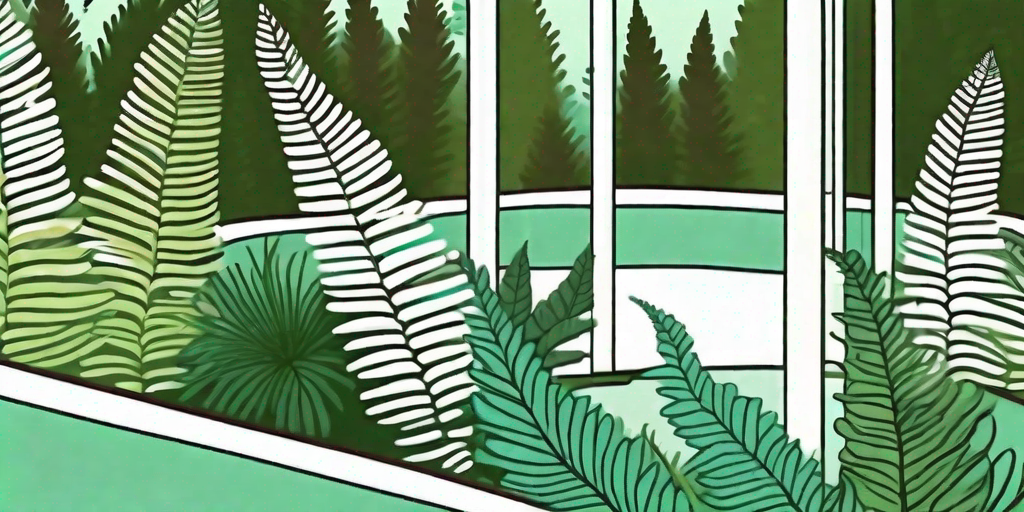
Are you tired of looking at your outdoor space and seeing a barren wasteland? Do you yearn for a lush, green paradise, but don't know where to start? Well, my friend, you've come to the right place. We're going to turn your brown thumb green and transform your outdoor space into a fern-filled wonderland. Let's dive into the world of ferns, shall we?
Understanding Ferns: More than Just a Pretty Frond
Before we get our hands dirty, let's take a moment to appreciate the beauty and complexity of ferns. These aren't your average garden variety plants. Ferns are ancient, predating dinosaurs by millions of years. They've survived ice ages, meteor impacts, and countless episodes of reality TV. They're hardy, adaptable, and, let's face it, they're pretty darn good looking.
But what makes a fern a fern? Well, unlike most plants, ferns reproduce via spores instead of seeds. They don't flower or fruit, but they do produce fronds, which are the leafy parts you're probably familiar with. These fronds can range from tiny and delicate to massive and robust, depending on the species.
The Anatomy of a Fern
Let's get up close and personal with a fern. A fern is made up of several parts, including the fronds, the rhizome, and the roots. The fronds are the leafy parts that we see above ground. They're divided into the blade, which is the leafy part, and the stipe, which is the stem.
The rhizome is the part of the fern that grows underground. It's a sort of stem that produces roots and fronds. The roots, as you might guess, help the fern absorb water and nutrients from the soil.
Fern Diversity
There are over 10,000 species of ferns in the world, ranging from the tiny Azolla, which measures just a few centimeters, to the giant tree ferns of New Zealand, which can reach heights of 20 meters. That's taller than a six-story building!
With such a wide range of species, there's a fern for every garden. Whether you have a sunny patio or a shady nook, there's a fern that will thrive in your outdoor space.
Choosing the Right Fern for Your Garden
Now that we've covered Fern 101, let's move on to the fun part: choosing the right fern for your garden. This is where your personal style and the conditions of your outdoor space come into play.
Do you have a sunny garden? Try a sun-tolerant fern like the bracken or the sword fern. Do you have a shady spot that needs some greenery? The maidenhair fern or the lady fern would be perfect. Do you want a fern that's easy to care for? The Boston fern or the rabbit's foot fern are great choices.
Considering Fern Size
Size matters when it comes to ferns. Some ferns, like the royal fern, can grow up to 6 feet tall, while others, like the maidenhair fern, are more petite. Consider the space you have available and choose a fern that will fit comfortably.
Remember, ferns grow slowly, so don't be discouraged if your fern doesn't reach its full size right away. Patience is a virtue in the world of fern gardening.
Considering Fern Hardiness
Not all ferns are created equal when it comes to surviving the elements. Some ferns are hardy and can withstand cold temperatures, while others are more delicate and prefer a mild climate.
Before you choose a fern, check its hardiness zone. This is a scale that indicates the minimum temperatures a plant can withstand. If you live in a colder climate, choose a hardy fern like the Christmas fern or the ostrich fern.
Planting and Caring for Your Ferns
Now that you've chosen your fern, it's time to get planting. But before you grab your shovel, let's go over some fern care basics.
Ferns prefer a well-draining soil that's rich in organic matter. They like a slightly acidic pH, so consider adding some peat moss or compost to your soil to increase its acidity.
Watering Your Ferns
Ferns love water, but they don't like to be waterlogged. Water your ferns regularly, but make sure the soil drains well. If the soil is constantly wet, the fern's roots can rot, which is a surefire way to kill your fern.
A good rule of thumb is to water your ferns when the top inch of soil is dry. In hot weather, you may need to water your ferns more frequently.
Feeding Your Ferns
Ferns are not heavy feeders, but they do appreciate a little snack now and then. Feed your ferns with a balanced fertilizer once a month during the growing season. Avoid high-nitrogen fertilizers, as these can cause the fronds to grow too quickly and become weak.
Remember, less is more when it comes to feeding ferns. Overfeeding can lead to lush but weak growth, so be conservative with your fertilizer.
Frequently Asked Questions
Why are my fern's fronds turning brown?
Brown fronds can be a sign of several issues, including under-watering, over-watering, or a lack of humidity. Check the soil moisture and adjust your watering schedule as needed. If the air is dry, consider misting your fern or placing it near a humidifier.
Can I grow ferns indoors?
Absolutely! Many ferns make excellent houseplants. Just make sure to provide them with plenty of indirect light, high humidity, and regular watering.
Do ferns need a lot of sunlight?
It depends on the species. Some ferns, like the maidenhair fern, prefer shady conditions, while others, like the sword fern, can tolerate more sunlight. Always check the light requirements of your specific fern.
Conclusion
And there you have it, folks! Your crash course in fern gardening. With a little patience, a bit of knowledge, and a dash of humor, you can transform your outdoor space into a fern-filled paradise. So go forth, choose your fern, and start your journey from brown to green. Happy gardening!















